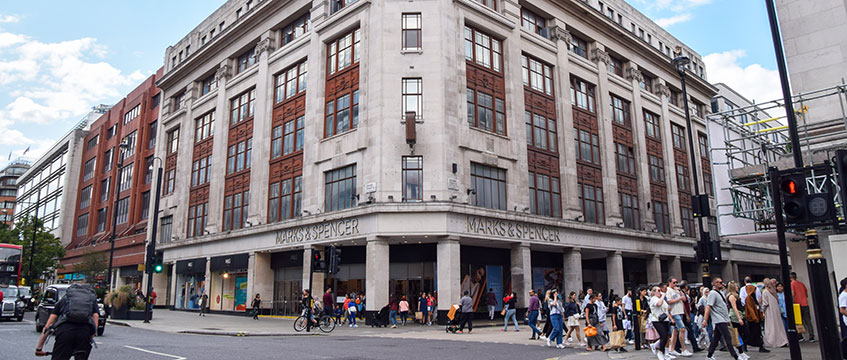Marks & Spencer’s legal action over the government’s decision to reject its plans for the redevelopment of its flagship Marble Arch store will reach the High Court tomorrow (13 February).
The retailer wants to demolish the art deco building and replace it with a modern, energy-efficient, mixed-use building combining retail and office space.
Although the plan was approved by Westminster City Council, housing minister Michael Gove intervened and rejected the planning application last July.
The decision highlights the sustainability arguments around redevelopment versus refurbishment.
Lawyers representing the retailer will argue at a two-day hearing that the secretary of state wrongly interpreted and applied planning policy to justify his rejection of the scheme on grounds of heritage and environmental concerns. A judgment is not expected until later in the year.
In a statement issued last year, M&S said it was “hugely disappointing” to have to take legal action “to overcome a misguided agenda against our scheme”.
Lawyers representing campaign group Save Britain’s Heritage will join the secretary of state in opposing M&S’s challenge.
Henrietta Billings, director of Save Britain’s Heritage, said today: “The M&S Oxford Street case captured the public’s imagination and attracted widespread media interest. It put carbon firmly at the heart of the debate and challenged the UK’s disposable attitude to buildings. It was the first time a planning inquiry had sustainability and heritage as its joint focus – two fundamentally important issues that go hand in hand and are mutually re-enforcing.”
According to Save Britain’s Heritage, by M&S’s own calculations, the new building would have released 40,000 tonnes of CO2 into the atmosphere, the equivalent of driving a typical car 99m miles – further than the distance to the sun. The group says it would also have permanently harmed the historic setting of the “nation’s high street” and Grade II* listed neighbour Selfridges.
It argued at the inquiry that the proposal was both damaging and unnecessary because most of the retailer’s aims could be achieved through a comprehensive retrofit, bringing the building up to modern standards and adapting it for contemporary uses.
When the legal action was announced, Alistair Watson, UK head of planning and environment at law firm Taylor Wessing, said the challenge was not unexpected and the retailer was right to challenge the government’s decision in the courts.
“We have all seen the reasoned reactions to the secretary of state’s decision,” he said.
“M&S and the real estate industry have relayed their views, and a lot of the real estate industry considers that the government got this wrong.
“The government chose to overlook the worth of evidence from recognised experts, including M&S’s leading sustainability experts, the very significant benefits of development and investment, and an inspector’s positive recommendation. Its planning decision has serious implications for everyone and it can be viewed as being illogical and unreasonable. On that basis, the decision needs and deserves to be challenged.”
Photo © Vuk Valcic/ZUMA Press Wire/Shutterstock
Send feedback to Jess Harrold
Follow Estates Gazette








